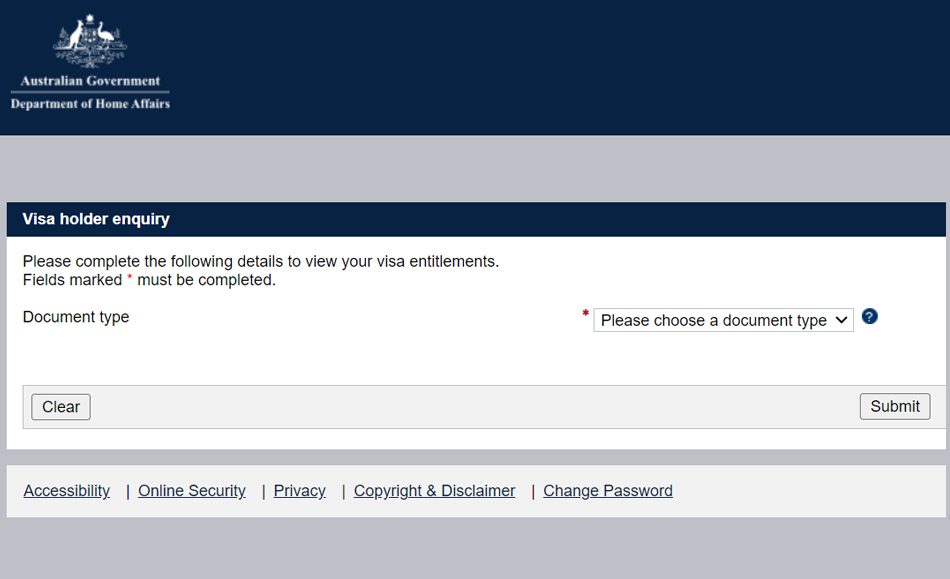For decades, Australia has been a popular destination for tourists, students, and the business community. The country’s diverse cultures, natural landscapes, and penchant for development has always been a crowd puller. Naturally, citizens of other countries want to visit or settle in Australia because of the country’s high standard of living and income stature.
The economy of Australia is majorly dominated by its service sector, which comprises more than 62 per cent of the total GDP and more than 78 per cent of the country’s labour force. Additionally, the Australian Securities Exchange, located in Sydney, is also the 16th largest stock exchange across the globe when factoring in domestic market capitalisation.
Having said that, if you are looking to visit Australia any time soon – whether for work or any other purposes – and want to check the status of your current Australian visa, then our extensive guide can help you.
How to Check Status of Visa Online
Checking the status of your Australian visa can be done in two ways – either online through the VEVO (Visa Entitlement Verification Online) system or through the myVEVO app on your smartphone. Keep in mind that the VEVO system will only provide information about your current visa details and conditions and not about any previous or new applications.
Checking Visa Status on Web

- Start the status-checking process by heading over to the official website here.
- On the landing page, select “Document Type > ImmiCard or Passport,” and then click on “Submit”.
- In the next step, under “Reference Type,” choose any one of the following: Visa Grant Number, Visa Evidence Number, or Transaction Reference Number (TRN); and enter the relevant details. TRN details can be found in your ImmiAccount, while the Visa Grant Number and Visa Evidence Number can be found in your visa grant notification letter and the visa label attached to your passport, respectively.
- Additionally, you also need to enter your date of birth and ImmiCard number. After that, click on “Submit” again.
- Once done, your visa status will be showcased automatically in your current window.
Checking Visa Status via App
- Begin your journey by first downloading the myVEVO app on your Android or Apple device from either the Google Play Store or the Apple App Store.
- Once downloaded, sign in to your account and create a PIN (Personal Identification Number). This PIN or security code will be used to quickly access all your visa details through the myVEVO app.
- After that, you need to select your document type, for which you need to choose between an ImmiCard or a passport.
- Once done, proceed to enter your personal information, such as your date of birth and ImmiCard or passport number. Keep in mind that if you have chosen the passport option, then you also have to select the country that has issued your passport.
- Finally, submit your information and accept all the terms and conditions. Your visa status details will be shown on your screen.
Please note that the VEVO system will state the following details about your current visa: the type of visa you possess, its expiration date, the must-not-arrive-after date, the total period of stay for your visa, and the terms and conditions you need to follow.
How to Contact For Help?
The most straightforward way to contact the Global Service Centre for the Department of Home Affairs for the Australian Government would be via phone at 131 881 (within Australia) or +61 2 6196 0196 (outside Australia). Phone lines are open from Monday to Friday, between 9 AM and 5 PM (local time).
In addition to that, you can also get in touch with the authorities through their offices in and outside of Australia, as well as via online forms.
Overview of Visas

The Department of Home Affairs for the Australian Government currently offers multiple types of visas depending on the applicant’s use-case scenario. To know more about them, proceed to go through our below-mentioned list thoroughly.
Visitor Visas: Ideal for short-term travellers who do not plan to settle in Australia and include the Transit Visa, Work And Holiday Visa, and Working Holiday Visa.
Studying And Training Visas: Created for applicants who are trainees, international students, or guardians/parents of underage international students. These include the Student Visa, Training Visa, and Student Guardian Visa.
Family And Partner Visas: Made for relatives and/or parents of Australian citizens (residential or non-residential citizens), which include the Adoption Visa, Child Visa, Aged Parent Visa, Aged Dependent Relative Visa, and Remaining Relative Visa.
Work And Skilled Visas: Typically allow applicants to work legally in Australia. Based on the type of work that is being carried out, some of the popular sub-types include Business Innovation And Investment (Permanent or Provisional) Visa, Business Owner Visa, Investor Visa, Global Talent Visa, Permanent Residence (Skilled Regional) Visa, and Temporary Activity Visa.
Refuge And Humanitarian Visas: Applicants who fulfil the protection obligations of Australia will be provided with this type of visa. Some of the sub-types include the Global Special Humanitarian Visa, Protection Visa, Refugee Visa, and Temporary Protection Visa.
Besides the aforementioned, some of the other types of visas include Bridging Visas (allowing applicants to stay in Australia while their immigration application is being processed), Medical Treatment Visas (for medical purposes), and Crew Travel Authority Visas (for international airline crew members).

